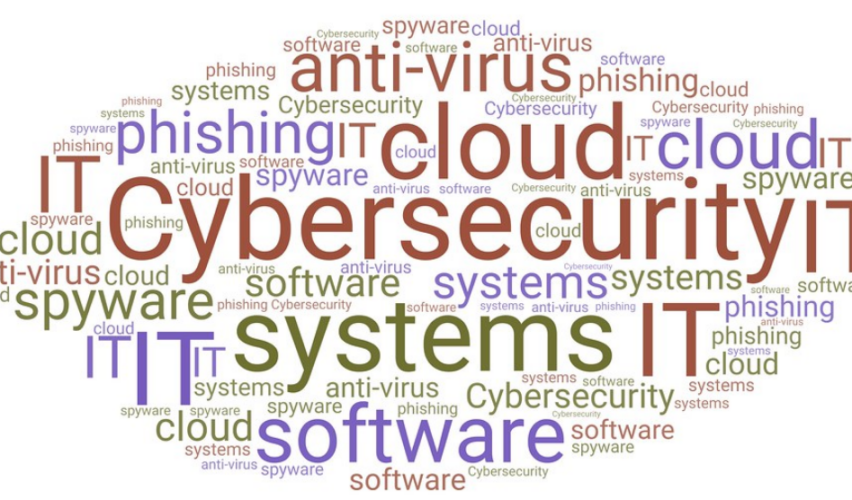Protecting confidential information is of paramount importance in today’s context, as data breaches and cyber threats become increasingly prevalent. The terms “cloud security” (hereinafter also “CS”) and “cybersecurity” (hereinafter also “digital protection” or “cyber defense”) are often used interchangeably when discussing digital protection issues.
However, it’s crucial to understand that these terms pertain to different aspects of safeguarding digital assets.
Understanding Cloud Security and Cybersecurity
In a landscape where information freely traverses networks and data loss takes top priority, the need to protect confidential information is more critical than ever before.
While these terms are frequently used interchangeably, they actually represent distinct realms of protection in the digital world. This article delves into the nuances of “cloud security” and “cybersecurity,” their meanings, differences, and the strategies required for the effective safeguarding of digital assets.
Defining Cloud Security
CS is a discipline that deals with safeguarding data, applications, and resources stored in cloud environments (hereinafter also “CEs,” “virtualized platforms” or “remote server landscapes”). The evolution of these technologies has transformed business operations by providing flexible scalability and efficient resource allocation.
However, this convenience gives rise to new challenges related to protecting data stored in specialized environments from unauthorized access, information leaks, and potential vulnerabilities.
Key components of CS include:
- Access Control: Implementing robust access control measures to ensure that access to confidential data and resources is granted only to authorized personnel;
- Data Encryption: Using encryption methods to transform data into an unreadable format during both rest and transmission, rendering it inaccessible to unauthorized parties;
- Identity and Access Management (IAM): Employing IAM solutions to manage user identification, roles, and permissions, enabling control over their access to the environment;
- Regulatory Compliance: Ensuring that data stored adheres to relevant industry standards and regulations.
Understanding Cybersecurity
Conversely, cybersecurity is a broader term encompassing the protection of digital assets across various domains, regardless of their storage location. This comprehensive approach involves safeguarding data, networks, devices, and systems against a myriad of cyber threats, including hacking attempts, malware infections, and phishing attacks.
Key components of digital protection include:
- Network Protection: Taking measures to protect network infrastructure using tools such as firewalls, intrusion detection systems, and intrusion prevention systems to fend off unauthorized access and attacks.
- Endpoint Protection: Providing protection for individual devices such as computers, smartphones, and IoT devices against threats using antivirus software, encryption, and other protective mechanisms.
- Threat Detection and Response: Utilizing advanced tools and technologies to detect potential cyber threats in real time and promptly mitigate their consequences.
- Disseminating Knowledge: Spreading awareness among employees and users about secure internet practices to minimize the likelihood of falling victim to social engineering attacks and other cyber threats.
Key Distinctions Between Cloud Security and Cybersecurity
While both types are integral to overall digital security, they significantly differ in terms of scope and focus.
| Aspect | Cloud Security | Cybersecurity |
|---|---|---|
| Scope of Protection | Focuses on safeguarding data and resources within CEs. | Encompasses a broader spectrum, including on-premises data, transmitted information, and more. |
| Responsibility | Operates on a shared responsibility model: Cloud service providers manage infrastructure security, while organizations secure data. | Organizations are fully responsible for safeguarding all digital assets, regardless of their location. |
| Threat Landscape | Addresses specific threats like misconfigured settings and unauthorized cloud account access. | Encompasses a wider array of threats, such as malware, phishing, insider breaches, and physical intrusions. |
The table provides a concise and informative comparison of CS and cybersecurity, highlighting the fundamental differences in protection, responsibilities, and types of threats they combat.
Harmonizing Cloud Security and Cybersecurity
Despite CS and cybersecurity seeming like distinct concepts, they are not mutually exclusive. Instead, they work in tandem to provide a robust strategy for safeguarding digital assets:
- Comprehensive Strategy: Combining effective protection measures with a reliable digital protection strategy ensures comprehensive protection for an organization. Such integration enhances the safety of data stored in CEs;
- Encryption Practices: Encryption forms the foundation of both CS and digital protection. Encrypting data at rest and during transmission is essential to prevent unauthorized access and ensure data integrity;
- Identity Management: Identity and Access Management (IAM) solutions play a pivotal role in both realms. Effective IAM methods ensure access to confidential information only by authorized individuals, regardless of their storage location.
Best Practices for Enhanced Security
To effectively bolster your organization’s defense against digital threats, consider implementing the following best practices:
- Risk Assessment: Regularly conduct comprehensive risk assessments to identify vulnerabilities and potential threats across your entire digital landscape, including both cloud and non-cloud assets;
- Authentication Protocols: Implement robust authentication mechanisms, such as multi-factor authentication (MFA), to prevent unauthorized access to systems and data;
- Continuous Auditing: Routinely audit security measures to ensure their currency and effectiveness. This includes evaluating the configurations of virtualized platforms, network settings, and cyber protocols;
- Employee Training: Train your employees to mitigate the risk of human errors leading to protection breaches. Training should cover both CS and broader cybersecurity awareness;
- Incident Response Planning: Develop a comprehensive incident response plan outlining actions to take in case of protection breaches. This plan should address incidents related to special technologies as well as broader cyber defense threats;
- Collaboration with Service Providers: If your organization relies on cloud service providers, collaborate with them to secure your resources. Understand their protocols, compliance standards, and incident response procedures.
Which Is Better: Cybersecurity or Cloud Security?
The question of whether cyber defense or CS is better isn’t straightforward, as both are crucial components of a comprehensive defense strategy and serve different purposes. It’s important to realize that these concepts are not in competition; rather, they work together to provide holistic protection for digital assets.
Let’s delve into this further.
Cybersecurity
Cybersecurity is focused on protecting all digital assets, regardless of their location. It encompasses a broad range of measures and practices aimed at safeguarding data, networks, devices, and systems from various cyber threats. This includes threats beyond virtualized platforms, such as malware, phishing attacks, social engineering, ransomware, and internal threats.
A robust cyber defense strategy is necessary to prevent and defend against a wide range of attacks that can target various parts of an organization’s infrastructure.
Cloud Security
CS pertains to protecting data, applications, and resources stored in cloud computing environments. It addresses issues specific to remote server landscapes, such as misconfigurations, insecure APIs, unauthorized access to accounts, and vulnerabilities in the services.
It’s directed at resolving challenges unique to CEs. While such service providers often ensure the security of the underlying infrastructure, the responsibility for protecting data and applications in the cloud falls on the organization.
Which Is Better?
Neither cybersecurity nor “cloud” security is inherently better, as they serve different purposes and encompass different aspects of safeguarding digital data:
Both of these areas are vital components of a comprehensive strategy. To ensure comprehensive protection, organizations need to focus on implementing measures in both cyber defense and “cloud” security.
A holistic protection approach involves integrating robust cyber defense methods with reliable measures for securing remote server landscapes. This integration guarantees that an organization will be prepared to counter a wide range of threats, regardless of their origin. Ultimately, the effectiveness of a strategy depends on how well it aligns with an organization’s specifics, data nature, threats, and utilized technologies.
It’s crucial to note that safety maintenance is an ongoing process, requiring continuous assessment, adaptation, and improvement. As technologies evolve and new threats emerge, staying informed about the latest measures is pivotal for maintaining robust defenses against cyber threats.
Is Cloud Security a Part of Cybersecurity?
Yes, CS indeed falls within the realm of cybersecurity. The latter is a broader concept that encompasses the protection of all digital assets from a wide range of cyber threats. Within cyber defense, CS is directed at safeguarding data, applications, and resources stored in cloud computing environments.
In other words, CS is a specialized area within the broader field of digital protection. While cybersecurity covers data and asset protection across various platforms, networks, devices, and environments, CS addresses the unique challenges and risks associated with cloud infrastructures and services.
Cloud computing security is linked to ensuring the confidentiality, integrity, and availability of data and applications in remote server landscapes. It involves measures such as access control, encryption, identity and access management (IAM), and monitoring to mitigate risks associated with cloud deployment.
Cloud service providers also play a role in securing the infrastructure itself, while organizations are responsible for protecting their data in the cloud. Thus, CS is an integral part of the broader field of cyber defense, and organizations using cloud services need to integrate CS measures into their overall cyberdefense strategy.
Is Cloud Security a Good Career?
Yes, a career in CS can be a promising and rewarding choice given the increasing reliance on cloud computing and the growing significance of safeguarding digital assets. Here are a few reasons why a career in CS can be a good choice:
- Growing Demand: As businesses continue to shift their operations to the cloud, there is a rising demand for professionals specializing in securing remote server landscapes. CS experts are needed to ensure the protection of data, applications, and resources stored in the cloud from cyber threats;
- Skills Shortage: There’s a shortage of qualified professionals in the fields of cybersecurity and CS. This shortage creates ample employment opportunities and competitive salaries for those possessing the necessary expertise;
- Constant Evolution: Cloud technologies and safety methods are continually evolving. This dynamic environment requires professionals to stay up-to-date with the latest trends, tools, and best practices, making the field intellectually stimulating and conducive to continuous learning;
- Role Diversity: CS encompasses a wide range of roles, from architects and engineers to penetration testers, compliance specialists, and incident responders. This diversity allows individuals to choose roles that align with their skills and interests;
- Influential Work: Cyber defense specialists play a vital role in safeguarding confidential data, ensuring business continuity, and preventing cyberattacks. Working in the field of CS directly contributes to the overall framework of an organization;
- Career Growth: By gaining experience and continuously learning, you can advance your career in CS. Senior positions such as CS Manager, Director, or Chief Information Security Officer (CISO) offer more responsibilities and leadership opportunities;
- Global Scope: CS experts often collaborate with organizations of various sizes and industries. This global reach can provide diverse experiences and opportunities to collaborate with different teams and cultures.
To embark on a successful career in CS, follow these steps:
- Education: Build a strong educational foundation in cybersecurity, information technology, or a related field. Consider obtaining certifications such as Certified Cloud Security Professional (CCSP), Certified Information Systems Security Professional (CISSP), or CompTIA Security+;
- Hands-on Experience: Gain practical experience through internships, project participation, or entry-level roles in IT or cybersecurity. Practical experience will help you develop technical skills and gain a deeper understanding of the concepts;
- Continuous Learning: Attend workshops, seminars, and conferences to stay updated on industry developments. Regularly refresh your skills and knowledge to remain competitive;
- Networking: Establish a professional network by interacting with colleagues, mentors, and industry professionals. Networking can assist in discovering new ideas, job opportunities, and collaboration prospects;
- Specialization: Consider specializing in a specific area of CS, such as AWS security, Azure security, DevSecOps, or regulatory compliance. Specialization can make you an expert in a particular field;
- Soft Skills: In addition to technical skills, develop communication, problem-solving, and critical thinking skills. These skills are essential for effectively conveying security issues and collaborating with cross-functional teams.

A career in CS offers the opportunity to have a significant impact on the development of the digital world. As organizations continue to prioritize cyber defense, the demand for qualified CS specialists is expected to remain high, making this profession attractive and promising.
Conclusions
Amid the dynamic evolution of digital security, understanding the differences and interplay between cloud and cyber defense is of paramount importance. By applying a comprehensive approach that encompasses both domains, you can effectively protect your digital assets from a wide range of threats.
Remember that comprehensive risk assessment, continuous learning, and the implementation of best practices that account for the nuances of both cloud and cyber defense are crucial.







